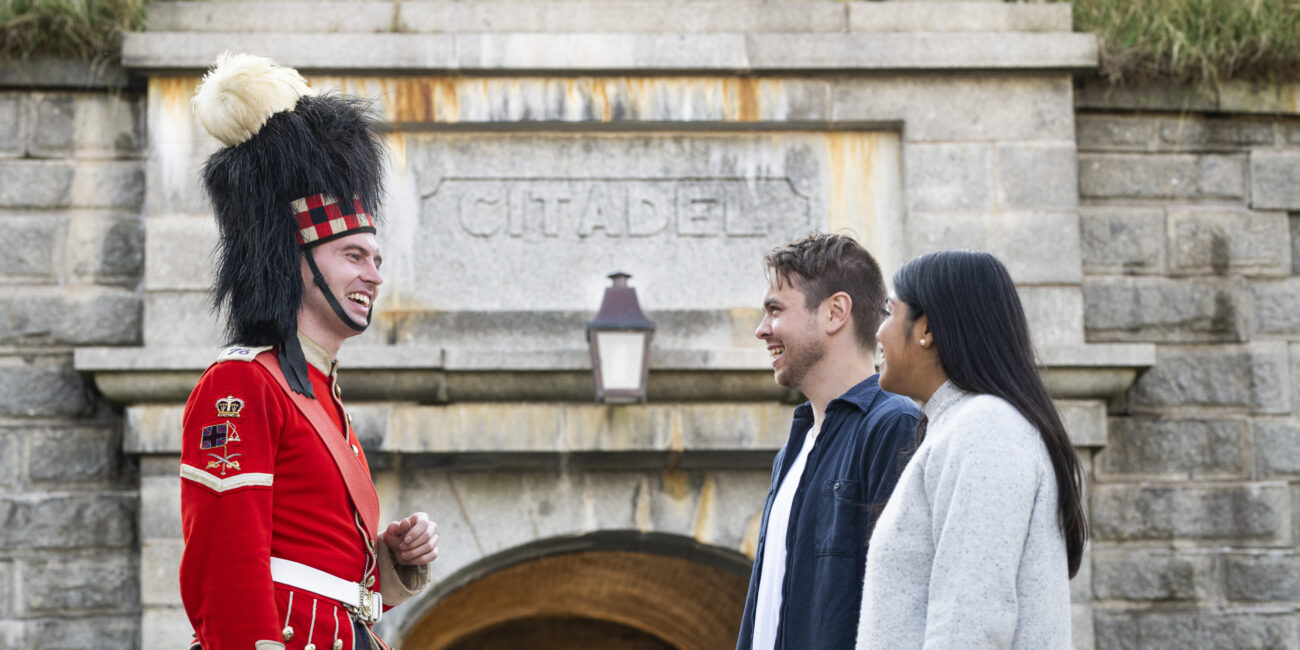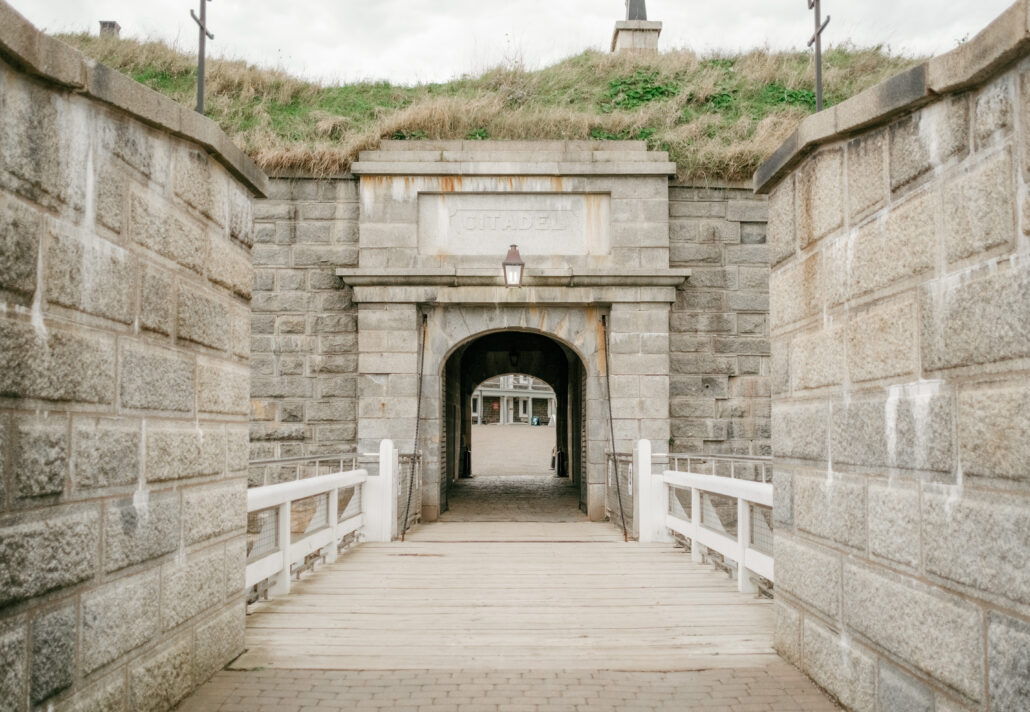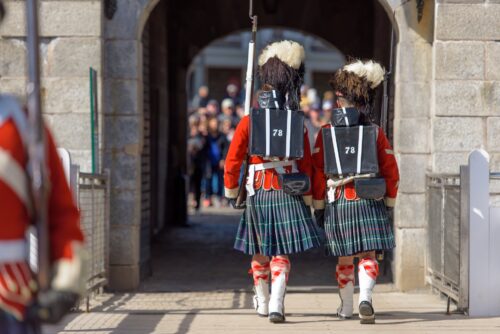Perched majestically over the city, the Halifax Citadel National Historic Site is not just a cultural landmark; it's a gateway to understanding Canada's military heritage and Halifax's history.
The fortress was strategically designed by the British in 1749 to protect Halifax from the French, who had regained control of Louisbourg on Cape Breton Island. This prompted the British to anticipate an attack on the mainland. In contrast to the present stone structure, the original fort was constructed of wood.
As a British naval base, the Citadel played a crucial role in future global conflicts. It provided panoramic views of the harbour and surrounding areas, enabling early detection of potential threats.
However, it wasn’t the French who wore down the first Citadel; the relentless damp climate and years of neglect led to three subsequent iterations.
The Citadel remains a symbol of Halifax’s resilience, inviting you to uncover the stories of the past that continue to shape the city today.
What to Bring
When visiting the Halifax Citadel, it’s important to dress for the weather, as conditions vary significantly across seasons. Summers are warm, making light clothing and water essential. However, it can get windy at the top of the Hill, so it’s a good idea to have a sweater or light jacket on hand.
In cooler months, prepare for brisk winds and potentially rainy or snowy conditions with warm, waterproof clothing. During the winter, fewer activities are available for visitors, but they’re still able to wander Parade Square and witness the noon gun. However, if conditions are slippery, access to the ramparts (the fort’s upper level) is restricted.
Comfortable walking shoes are a must year-round. Consider the noon cannon fire—it’s loud, so sensitive ears might want ear protection.

Arrival
After a leg-burning walk up Citadel Hill, Halifax’s vibrant sights and sounds greet you. If the walk doesn’t take your breath away, the stunning views certainly will.
No need to rush—take in the views and read the informative plaques along the climb explaining the Citadel’s strategic importance. For more astonishing views, trek over to the south and north viewing points along the road that encircles the Halifax Citadel.
Walking past the Guardroom, Parade Square greets all as the heart of the Citadel, the perfect place to explore exhibits or unwind at the coffee bar. Visitors can enjoy various food and drink options, making the coffee bar the perfect spot to relax, refresh, and recharge.
For those seeking unique experiences, the Halifax Citadel offers everything from candle-lit tours to soldier reenactments. Bring the past to life by donning a 78th Highlander’s uniform for a day and firing a Snider-Enfield rifle. There are plenty of options to enjoy your time, including spirit tasting and ghost tours.
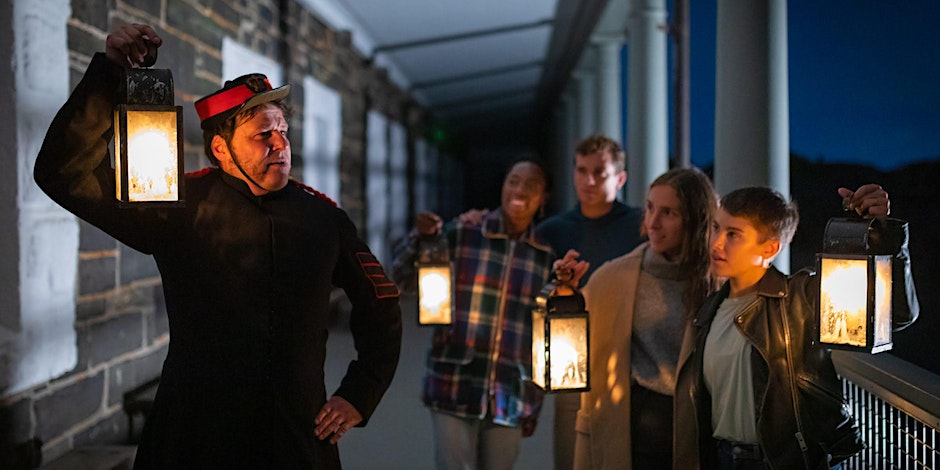
What to See
Journey through the site and discover nine fascinating period rooms. Step into the Barracks to get an authentic glimpse of a soldier’s daily life in 1869, complete with the beds, blankets, and living conditions that once housed hundreds of soldiers.
When moving on from the Barracks, continue to dive into the life of a soldier on the hill. Recognizing the importance of education, Queen Victoria introduced schoolrooms to ensure soldiers were better equipped with knowledge and skills. This initiative improved their service and prepared them for life beyond the military—a legacy showcased in the Citadel’s School Room.
From educating the soldiers and their children, the School Room now serves guests with an engaging experience. It presents maps of the 1860s and a unique education environment reflective of its time.
Exiting the School Room, head to the Shaping the Hill exhibit, which reveals the fascinating construction history of the four Citadels. Visitors can navigate interactive displays and a descriptive virtual tour of a scale model of the star-shaped fortress, highlighting the impressive engineering behind these forts.
As noon approaches, the thunderous cannon fire is a must-see. The expert loading and firing of the massive cannon resonates across Halifax at noon every day, a powerful reminder of the Citadel’s historic defence.
While at the peak of the Citadel, learn about the signal masts and how they were utilized to send over 400 different coded signals down to both Halifax’s citizens and to the other forts that protected the harbour.
Fortress Halifax, A City Shaped by Conflict
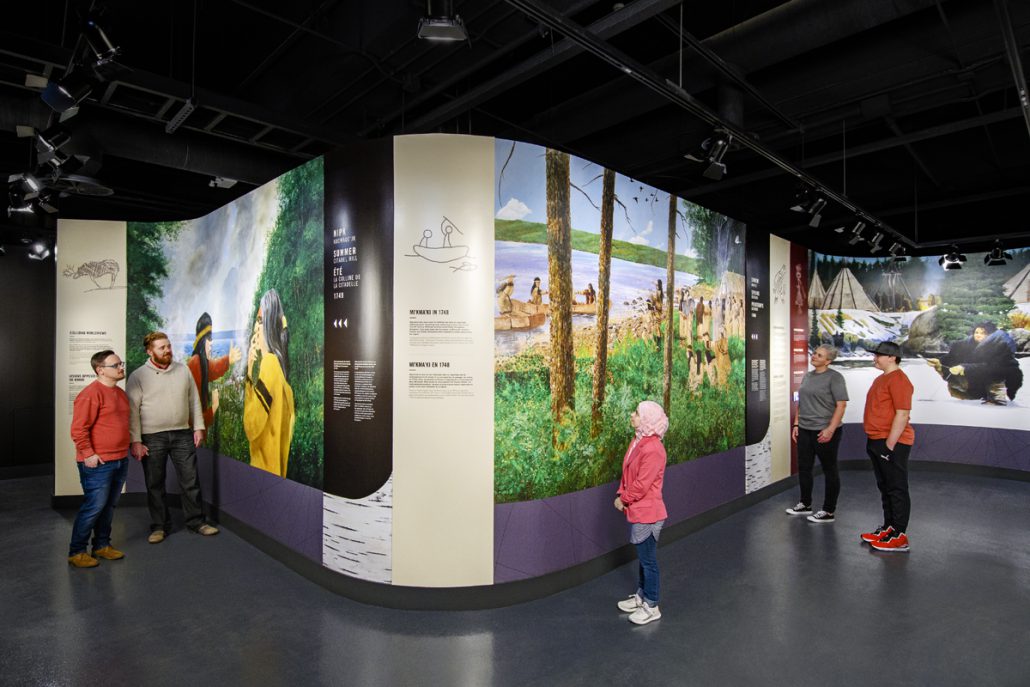
The experience reaches new heights at the Citadel’s newest exhibit, Fortress Halifax, A City Shaped By Conflict. The exhibit conveys the experiences of Mi’kmaq, Acadians, African Nova Scotians, British colonists and soldiers, women and men, war refugees, and the marginalized.
Leonard Paul’s art greets you and captures the essence of Kjipuktuk (Halifax) pre-colonization. Meanwhile, the interactive One Land, Four Peoples touch table allows users to explore a map of the region that reveals a different map layer depending on whether they choose a Mi’kmaw, Acadian, French, or British cultural lens. Building on these perspectives, the exhibit delves into Mi’kmaw heritage, the evolution of the Citadels, and Halifax’s role in global conflicts.
Uncover fascinating stories, from the Jamaican Maroons who were vital in building the third Citadel’s defences to the hometown heroes who made remarkable contributions to Canada’s war efforts. Continuing the informative and immersive experience, listen to and watch first-person perspectives recounted by those who shaped Halifax through interactive screens.
If you’re looking for some fun, step into soldier tents, try on uniforms, and even dress up as a Royal Artillery member.
Those seeking a low-key activity can sit and watch “A Harbour Worth Defending”, a captivating 15-minute film showcasing Halifax’s importance as a British and Canadian naval base. The film provides an engaging overview of the city’s strategic importance through the ages, giving visitors a chance to rest while submerging themselves in the region’s rich history.
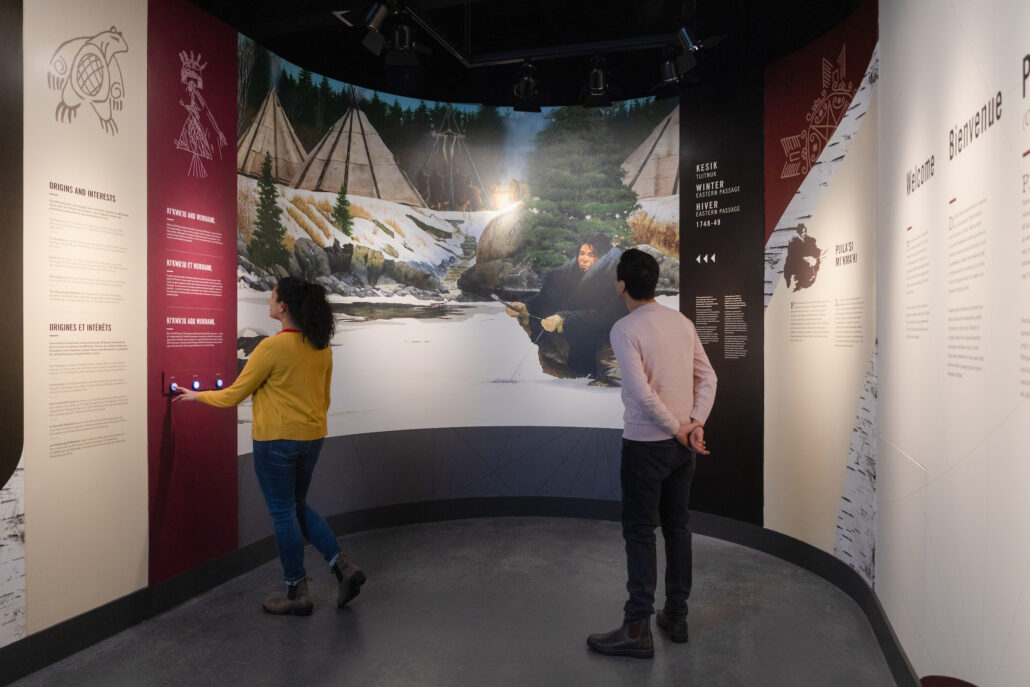
Final Stops
Before concluding your tour, stop by the Army Museum to delve into military history through photographs, artifacts, and exhibits such as The Road to Vimy and Beyond and The Trail of the Canadian Army, which trace Canada’s contribution to the world wars.
As you return to Parade Square, the sounds of bagpipes and drums may fill the air, or you might witness the crack of rifles firing at any moment.
